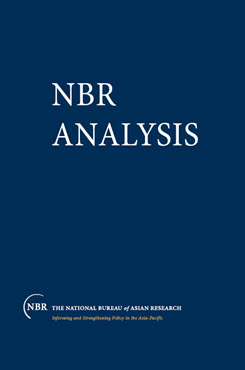NBR Analysis vol. 11, no. 1
Asian Armed Forces
Internal and External Tasks and Capabilities
In order to assess the impact of the economic crisis on Asian military forces and the possibility for multilateral military cooperation in Southeast Asia, this study analyzes recent trends in defense spending and military acquisitions in the original ASEAN core countries (Indonesia, Malaysia, Thailand, the Philippines, and Singapore).
All armed forces have both domestic and international responsibilities. As a general rule, the less democratically and economically developed a state, the more these responsibilities and capabilities focus on domestic control and the greater the political role and share of defense budgets that go to armies rather than navies and air forces. As countries mature both economically and politically, maintaining domestic order through the use or threat of force usually declines while concern over the preservation of one’s territorial environs, borders, and trade routes increases. Navies and air forces, designed primarily for protection against external predators, as well as the projection of power away from the homeland take on a new importance. Navies and air forces are capital–intensive, requiring both larger defense budgets in general and a greater share of those budgets if their missions are to be achieved. Interservice rivalries over resources, missions, and political clout are a frequent result.
Prior to the economic crisis of 1997–98, Asian–Pacific states were experiencing some of the world’s most rapid economic growth of the century. Attendant upon this growth, the region’s armed forces were also burgeoning. Asian arms imports were 23 percent of the global total in 1996, second only to the Middle East. [1] State of the art systems for air forces and navies were being purchased in both Northeast Asia and Southeast Asia in a post–Cold War buyers. Global arms market. The impact of the economic crisis changed all this virtually overnight. Thailand cut its 1998 defense budget by 30 percent with the prospect of further reductions in 1999. Malaysia reduced its defense spending by close to a billion ringgit (approximately $250 million), canceling all air defense exercises for 1998. The Philippines indefinitely deferred its defense modernization plans, and Indonesia halted the purchase of all new air and naval equipment. Even Japan cut defense spending for 1998 by 0.3 percent, leading to cutbacks in new equipment and a reduction in support for U.S. forces stationed there. Overall, the members of the Association of Southeast Asian Nations (ASEAN) spent one–third less on defense in 1998 than in 1997, with the bulk of the cuts coming from the acquisition of equipment for air forces and navies. [2]
The purpose of this paper is to assess how the armed forces in selected Asian–Pacific states are adjusting to the more limited pace of modernization in the aftermath of the late–1990s economic crisis, how internal turmoil in…
[1] Cited in Graeme Cheeseman, .Asia-Pacific Security Discourse in the Wake of the Asian Economic Crisis,. The Pacific Review, vol. 12, no. 3 (1999), p. 339. Also see, Sheldon W. Simon, .The Economic Crisis and Southeast Asian Security: Changing Priorities, NBR Analysis, vol. 9, no. 5 (December 1998), pp. 14-15.
[2] Cheeseman, Asia-Pacific Security Discourse, pp. 339-341.


